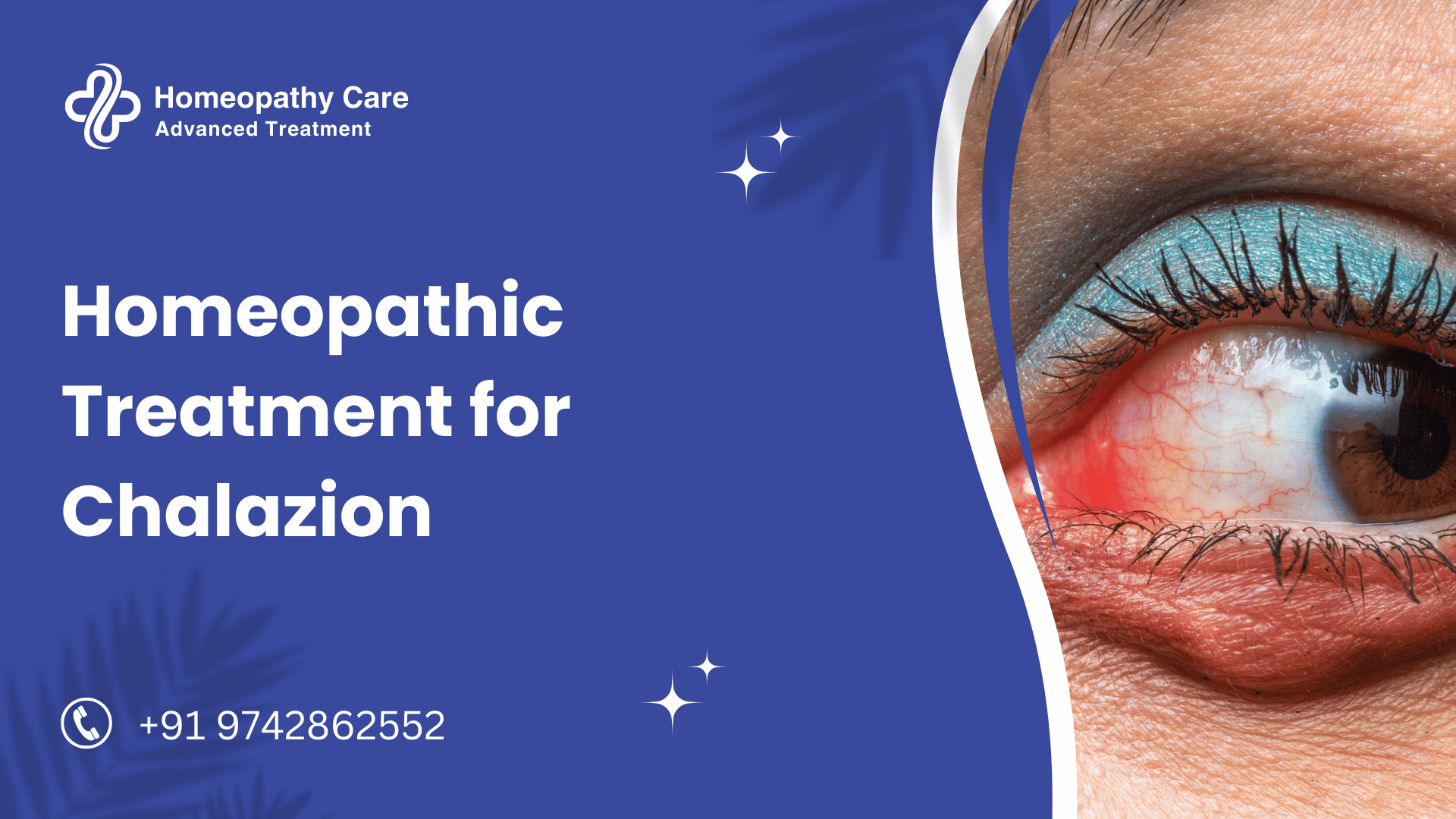Natural Remedies for Chalazion: Homeopathic Approach
Introduction: Are you struggling with a chalazion, commonly known as a meibomian cyst? This small bump on your eyelid can be uncomfortable and bothersome. While conventional treatment often involves surgical removal, there’s a gentle, non-invasive alternative: homeopathy. In this article, we’ll explore effective homeopathic remedies to treat chalazion naturally.
Understanding Chalazion: Before delving into remedies, let’s understand what a chalazion is. A chalazion is a small cyst or lump in the eyelid caused by inflammation or blockage of the meibomian gland. Unlike a stye, which is painful and forms at the eyelid margin, a chalazion typically forms away from the margin and is painless.
Homeopathic Treatment for Chalazion: Homeopathy offers a natural and gentle approach to treating chalazion. Here are some top-grade homeopathic medicines known for their effectiveness:
- Conium Maculatum:
- Ideal for hard chalazion nodes with watering from eyes.
- Dosage: Conium 30 C once a day.
- Calcarea Fluor:
- Recommended for markedly hard chalazion nodes.
- Dosage: Four tablets of Calcarea Fluor 6X three to four times a day.
- Thuja Occidentalis:
- Suitable for chalazion accompanied by heaviness of the eyelid.
- Dosage: Start with 30C potency once a day.
- Staphysagria:
- For recurrent chalazion and blepharitis.
- Dosage: 30C potency once a day.
- Silicea:
- Effective for infected chalazion with pain and swelling.
- Dosage: Silicea 6X two to four times a day.
It’s important to note that these medicines should be used for three to four weeks in the recommended dosage. If there’s no improvement, consult a homeopathic physician.
Understanding Chalazion Formation: Chalazion forms due to blockage of the meibomian gland, retention of sebum secretions, and the subsequent formation of a cyst. Risk factors include long-term blepharitis, seborrheic dermatitis, and dysfunction of the meibomian gland.
Clinical Picture of Chalazion: Chalazion presents as a small, hard bump in the eyelid, often painless. Other symptoms may include irritation, blurred vision, and mild tenderness. In some cases, chalazion may resolve on its own, while in others, it may lead to complications like hordeolum internum.
Conclusion: If you’re dealing with chalazion, consider exploring homeopathic remedies for gentle and natural relief. These remedies offer a non-invasive alternative to surgical removal and may prevent recurrence. Remember to consult a healthcare professional before starting any treatment regimen.


